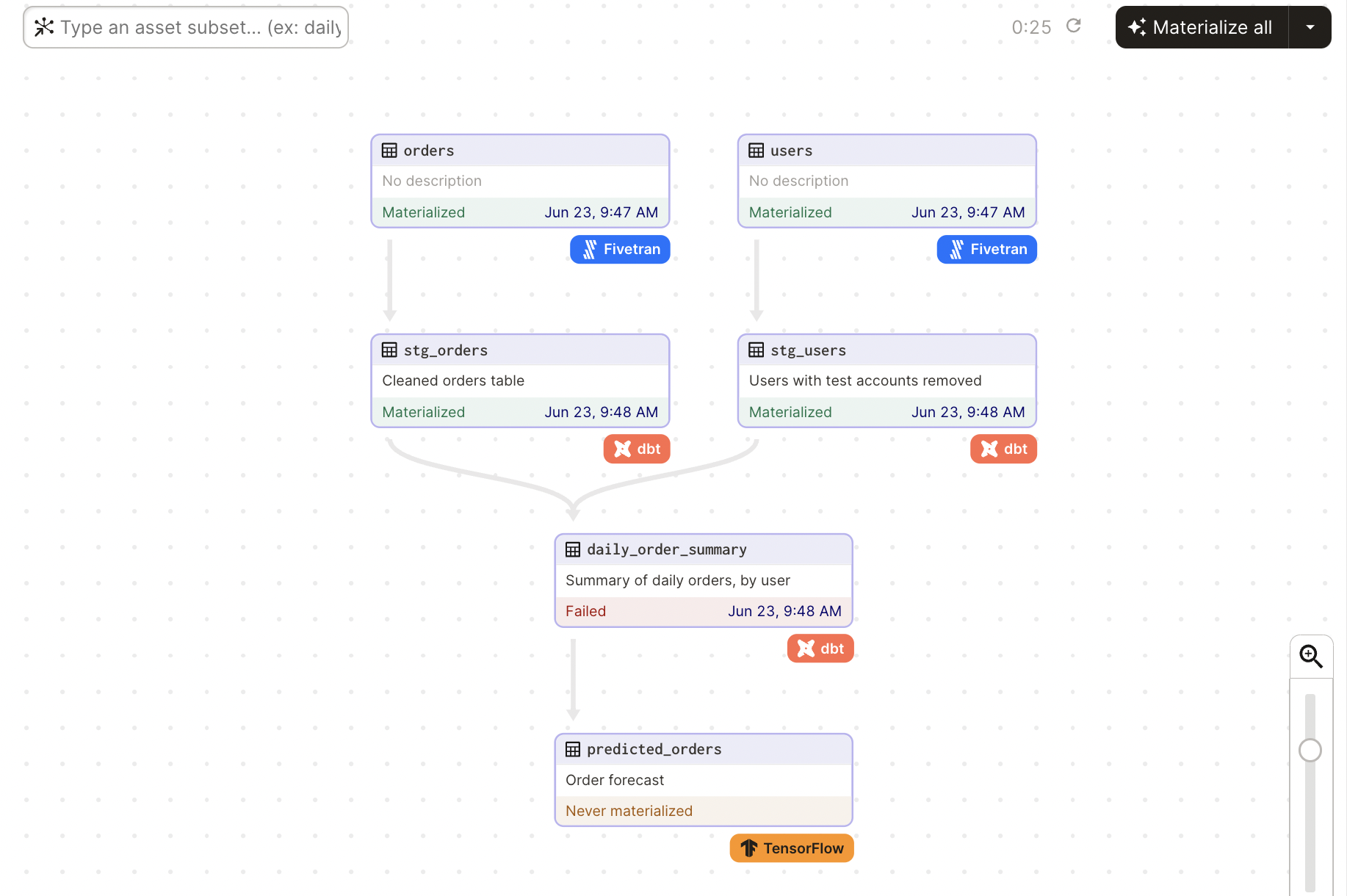How do dbt models relate to Dagster assets?
dbt models are assets: they produce data and can have dependencies. Because of these similarities, Dagster can translate each of your dbt models into a Dagster Software-defined Asset (SDA).
How can Dagster do this? Each component of a Dagster asset has an equivalent counterpart in a dbt model:
- The asset key for a dbt model is (by default) the name of the model
- The upstream dependencies of a dbt model are defined with
reforsourcecalls within the model's definition - The computation required to compute the asset from its upstream dependencies is the SQL within the model's definition
These similarities make it natural to interact with dbt models as Dagster assets. Using dbt with Dagster, you can create an asset graph like the following:

From code like this:
from pathlib import Path
from dagster_dbt import DbtCliResource, dbt_assets, get_asset_key_for_model
from dagster_fivetran import build_fivetran_assets
from dagster import AssetExecutionContext, asset
fivetran_assets = build_fivetran_assets(
connector_id="postgres",
destination_tables=["users", "orders"],
)
@dbt_assets(manifest=Path("manifest.json"))
def dbt_project_assets(context: AssetExecutionContext, dbt: DbtCliResource):
yield from dbt.cli(["build"], context=context).stream()
@asset(
compute_kind="tensorflow",
deps=[get_asset_key_for_model([dbt_project_assets], "daily_order_summary")],
)
def predicted_orders():
...
Let's break down what's happening in this example:
- Using
build_fivetran_assets, we load two tables (users,orders) from a Fivetran Postgres connector as Dagster assets - Using
@dbt_assets, Dagster reads from a dbt project'smanifest.jsonand creates Dagster assets from the dbt models it finds - Lastly, we create a Dagster
@assetnamedpredicted_ordersthat has an upstream dependency on a dbt asset nameddaily_order_summary